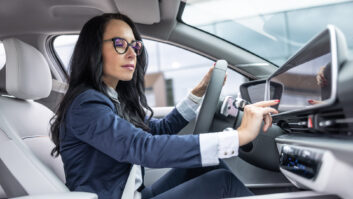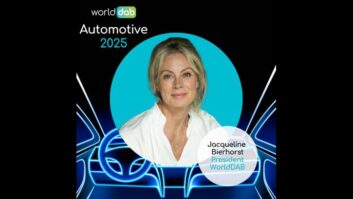This story is adapted from the ebook “Radio’s Call to Action.: DTS AutoStage.”

NAB PILOT, Xperi and several major radio companies are part of a group that has been working to ensure that radio is integrated into Google’s open-source Android Automotive operating system for connected cars. John Clark, executive director of PILOT, says they are ready to pitch Google executives to make the case for broadcast radio to be supported properly in that system.
The Android Automotive OS will be a standalone system with user apps installed directly to the car’s system — no smartphone required. (“Android Automotive” is distinct from “Android Auto,” where the system runs on the user’s phone.)
Android Automotive OS is expected to be available in about 50% of new cars in the next seven years. General Motors, Ford, Audi and Stellantis are among those with plans to integrate the platform.
Clark says the goal of PILOT’s initiative is to help define what radio will look like in these dashboards and ensure that radio can benefit from the rollout.
He said Xperi is doing much of the development work. Also involved are Beasley Media Group, iHeartMedia, Audacy, Salem Media Group, NPR and BBC. The group also took input from Ford and Audi.
Google itself is a member of NAB PILOT, and Clark said the group has had conversations with the company throughout the process.
[Check Out More of Radio World’s Ebooks Here]
“An extensive amount of work has been done. This round of work is finished, so now it’s time to reach back out to Google,” Clark said in late 2021. He didn’t specify a timeframe but hoped the presentation could be done early this year.
The group’s work includes a recommendations document. Though specifics have not been made public, Clark says it outlines vendor extensions and other parameters that the group would want Google to incorporate into Android Automotive.
Clark says it has defined standards in broadcast radio that should be supported, like RDS, dynamic text, station logos, slide show images and multicast channels.
“I would describe this process as making sure all the services radio broadcasters have put in place are fully functional in the (Android) system itself.”
Clark says it is vital that the broadcast be a part of Android Automotive with full functionality, which in turn will help leverage a truly hybrid experience, as envisioned by a platform like Xperi’s DTS AutoStage.
“Then folks like Xperi can begin layering in things coming over the IP connection. But to get to hybrid we have to make sure the radio broadcast piece is there.”
How long might it take for this work to bear fruit?
“Google is probably working on a two-year implementation cycle for release in an open source software environment — I’d say more than one year but less than three, to get things vetted, tested and hardened. You have to remember we are talking about the entire operating system for the dashboard. So they are working through a lot of things not related to radio. Think about voice control and the impact of that alone.”
But Clark emphasizes that time is short for radio to “bend the ear” of the big tech company. For instance, Ford says it will turn over its operating vehicle systems to Google beginning in 2023. The automaker’s deep integration of the Android system will include voice-activated Assistant, Google Maps and other automotive approved Android apps, according to an announcement from Ford.
Clark said it is possible that NAB will be able to demonstrate what broadcast radio in an Android Automotive OS environment could look like at the NAB Show in April.
“We hope to showcase a radio interface on Android Automotive that takes advantage of all features of broadcast radio.”







